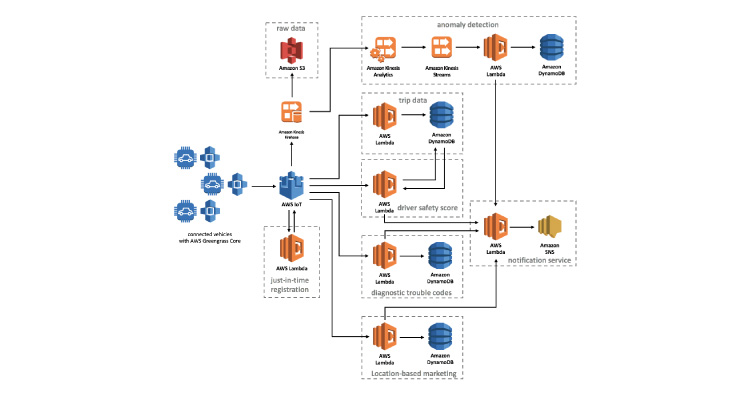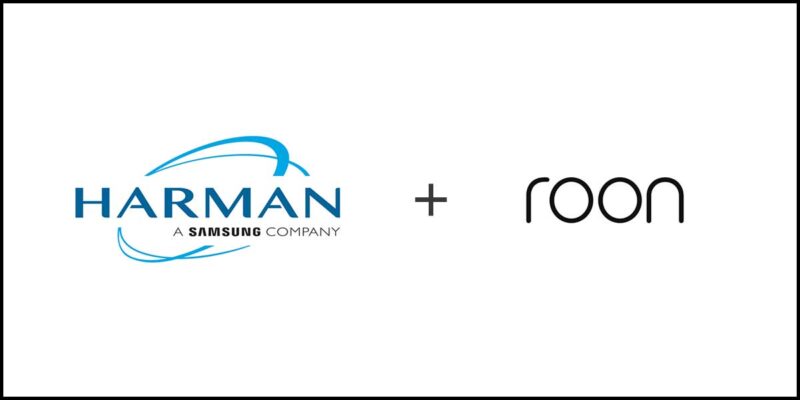Amazon Targets Harman With New AWS-Based Connected Car Solution

Amazon is putting Harman’s in-car entertainment and network business on notice with the launch of its new AWS Connected Vehicle Solution. According to Amazon, Amazon Web Services (AWS) enables automotive manufacturers and suppliers to build serverless IoT applications that gather, process, analyze and act on connected vehicle data without having to manage any infrastructure (the way Harman does it now). With AWS IoT, customers can connect vehicles and devices to the AWS Cloud securely, with low latency and with low overhead.
To help customers (car manufacturers) more easily develop and deploy a wide range of innovative connected vehicle services, AWS offers a connected vehicle solution that provides secure vehicle connectivity to the AWS Cloud, and a framework that helps customers integrate AWS IoT and AWS Greengrass into the Automotive Grade Linux (AGL) software stack.
The connected vehicle solution includes capabilities for local computing within vehicles, sophisticated event rules, and data processing and storage. The solution is designed to provide a framework for connected vehicle services, allowing you to focus on extending the solution’s functionality rather than managing the underlying infrastructure operations. You can build upon this framework to address a variety of use cases such as voice interaction, navigation and other location-based services, remote vehicle diagnostics and health monitoring, predictive analytics and required maintenance alerts, media streaming services, vehicle safety and security services, head unit applications, and mobile applications.
The diagram below presents the components and functionality you can build using the solution implementation guide and accompanying AWS CloudFormation template:
- When AWS IoT receives a message, it authenticates and authorizes the message and the Rules Engine executes the appropriate rule on the message, which routes the message to the appropriate backend application.
- An AWS IoT rule sends telematics data to an Amazon Kinesis Firehose delivery stream, which encrypts and streams raw vehicle telematics data to an Amazon S3 bucket. If an Amazon Kinesis Analytics application detects an anomaly, the record is sent to Amazon Kinesis Streams, which invokes an AWS Lambda function that parses the record, stores it in an Amazon DynamoDB table, and triggers an Amazon Simple Notification Service (Amazon SNS) notification to users.
- The trip data AWS IoT rule invokes an AWS Lambda function that processes vehicle telematics data during a trip and stores it in a DynamoDB table.
- The driver safety score AWS IoT rule detects the end of a trip and invokes an AWS Lambda function that processes aggregate trip data to generate a driver’s safety score, trigger an Amazon SNS notification to the driver, and add the score to the trip data table.
- The diagnostic trouble code AWS IoT rule detects diagnostic trouble codes in the IoT topic and invokes Lambda functions that store the trouble code in a DynamoDB table, translate the trouble code into layman’s terms, and trigger an Amazon SNS notification to the user.
- The location-based marketing AWS IoT rule detects the location of the vehicle and invokes a Lambda function that determines whether the vehicle is near a point of interest. When the vehicle is near a point of interest, the function logs the location in a DynamoDB table and triggers an Amazon SNS notification to the user that contains an advertisement.
Here are more details.





